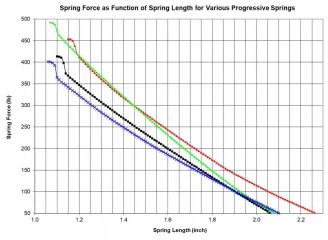acadian
VIP MEMBER
- Joined
- Mar 5, 2010
- Messages
- 1,376
I've previously set them up in the head using only the installed height figures, but I've got some beehive springs on the way, and I'll be using a press with a scale this time before installing them in the head, my plan is to try and achieve the poundage at specified height in the press using shims, but once installed in the head I can't think of a way to verify the setting. I've looked at some fancy in-head spring load gauges, but they're far too pricey and I doubt they'd even work on a brit cylinder head. Anyone have a tip they could share?

